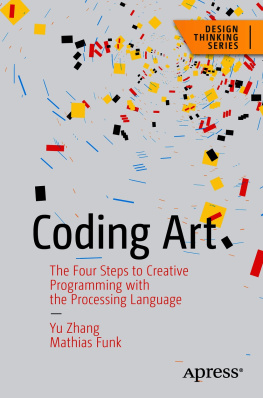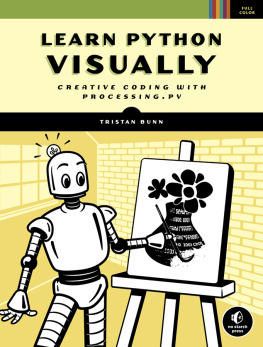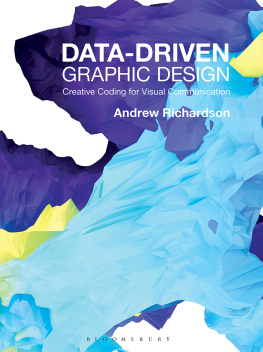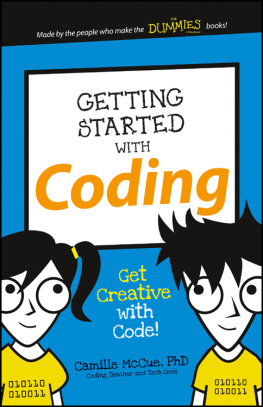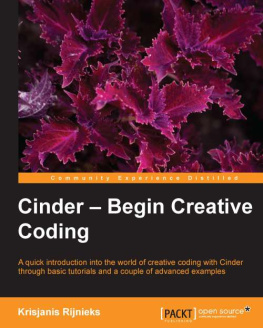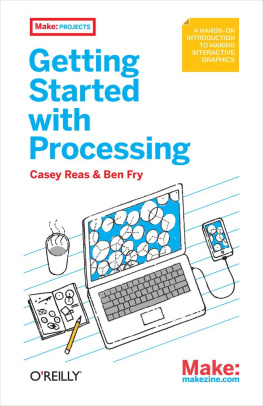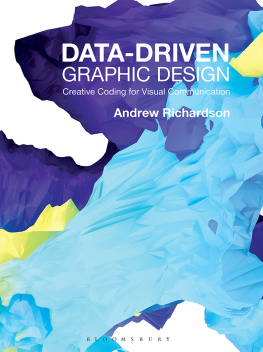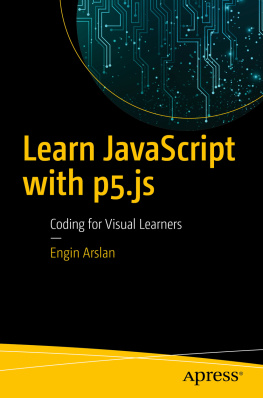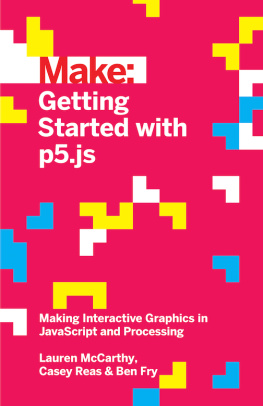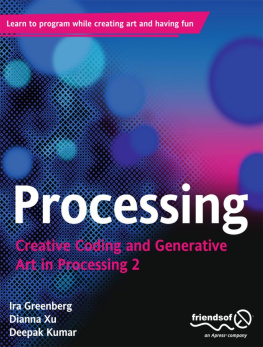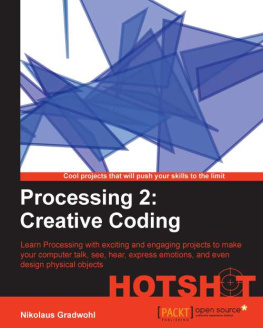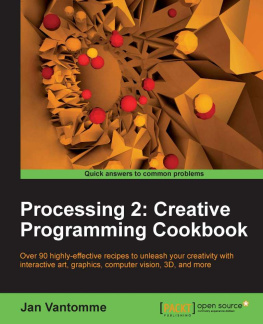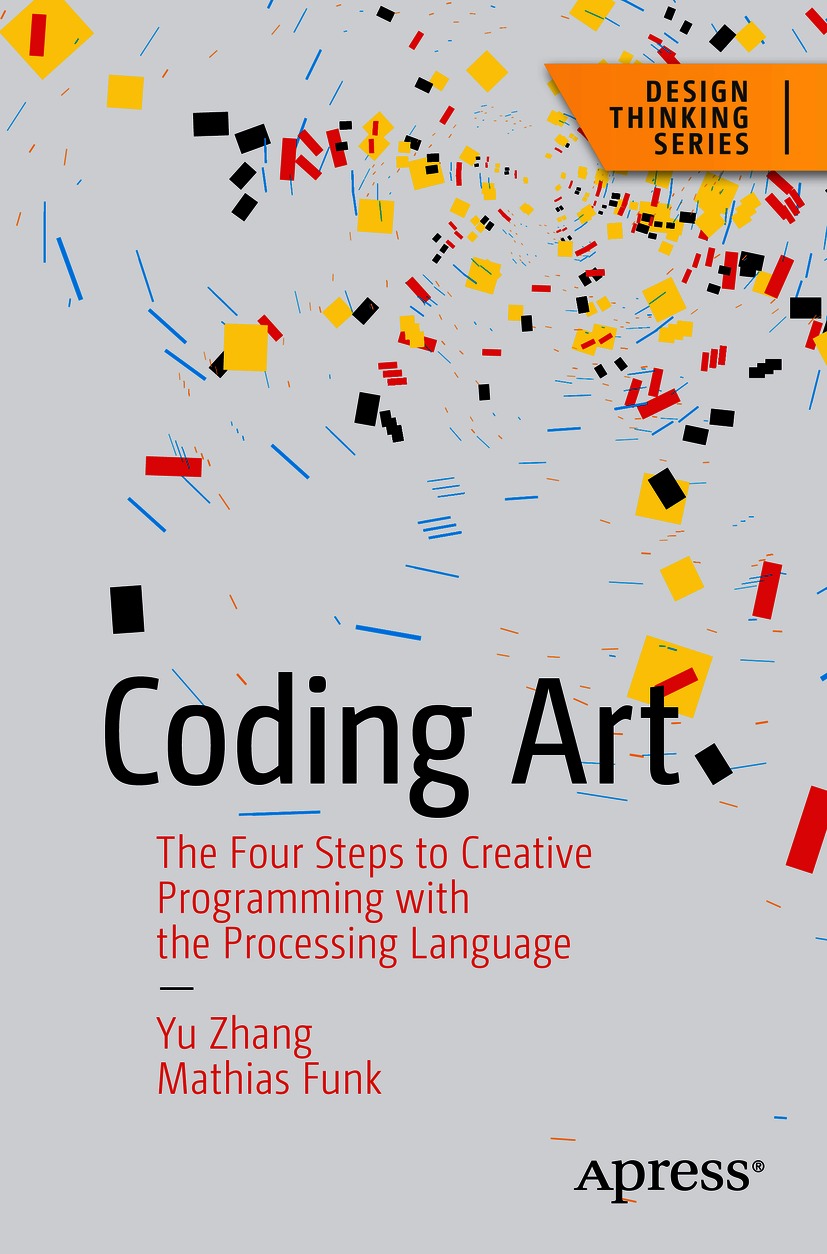Yu Zhang - Coding Art: The Four Steps to Creative Programming with the Processing Language (Design Thinking)
Here you can read online Yu Zhang - Coding Art: The Four Steps to Creative Programming with the Processing Language (Design Thinking) full text of the book (entire story) in english for free. Download pdf and epub, get meaning, cover and reviews about this ebook. year: 2021, publisher: Apress, genre: Home and family. Description of the work, (preface) as well as reviews are available. Best literature library LitArk.com created for fans of good reading and offers a wide selection of genres:
Romance novel
Science fiction
Adventure
Detective
Science
History
Home and family
Prose
Art
Politics
Computer
Non-fiction
Religion
Business
Children
Humor
Choose a favorite category and find really read worthwhile books. Enjoy immersion in the world of imagination, feel the emotions of the characters or learn something new for yourself, make an fascinating discovery.
- Book:Coding Art: The Four Steps to Creative Programming with the Processing Language (Design Thinking)
- Author:
- Publisher:Apress
- Genre:
- Year:2021
- Rating:3 / 5
- Favourites:Add to favourites
- Your mark:
Coding Art: The Four Steps to Creative Programming with the Processing Language (Design Thinking): summary, description and annotation
We offer to read an annotation, description, summary or preface (depends on what the author of the book "Coding Art: The Four Steps to Creative Programming with the Processing Language (Design Thinking)" wrote himself). If you haven't found the necessary information about the book — write in the comments, we will try to find it.
In this book youll learn to apply computation into the creative process by following a four-step process, and through this, land in the cross section of coding and art, with a focus on practical examples and relevant work structures. Youll follow a real-world use case of computation art and see how it relates back to the four key pillars, and addresses potential pitfalls and challenges in the creative process. All code examples are presented in a fully integrated Processing example library, making it easy for readers to get started.
This unique and finely balanced approach between skill acquisition and the creative process and development makes Coding Art a functional reference book for both creative programming and the creative process for professors and students alike.
What Youll Learn
- Review ideas and approaches from creative programming to different professional domains
- Work with computational tools like the Processing language
- Understand the skills needed to move from static elements to animation to interaction
- Use interactivity as input to bring creative concepts closer to refinement and depth
- Simplify and extend the design of aesthetics, rhythms, and smoothness with data structures
- Leverage the diversity of art code on other platforms like the web or mobile applications
- Understand the end-to-end process of computation art through real world use cases
- Study best practices, common pitfalls, and challenges of the creative process
Who This Book Is For
Those looking to see what computation and data can do for their creative expression; learners who want to integrate computation and data into their practices in different perspectives; and those who already know how to program, seeking creativity and inspiration in the context of computation and data.
Yu Zhang: author's other books
Who wrote Coding Art: The Four Steps to Creative Programming with the Processing Language (Design Thinking)? Find out the surname, the name of the author of the book and a list of all author's works by series.

